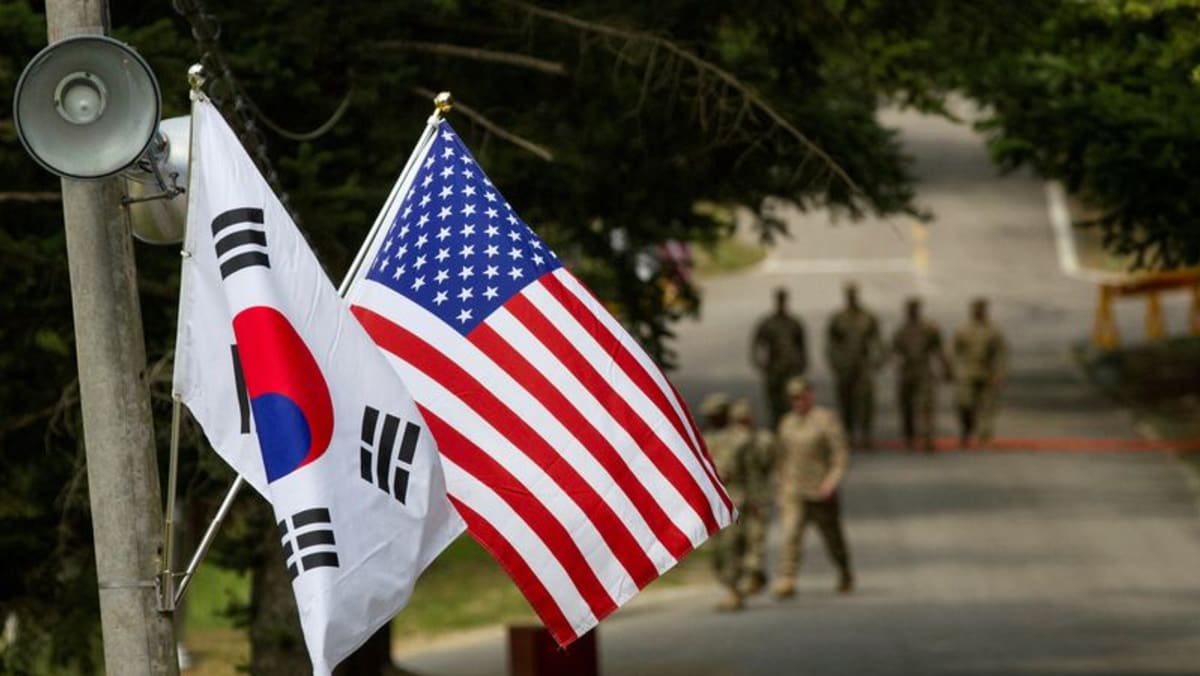It is the season of military drills in the highly contested and militarized Indo-Pacific region. After prolonged and provocative live-fire exercises by China, it is now the turn of its regional rival, South Korea, and chief adversary, the United States, to take center stage.
Amid US-China EW Battle, US Shows Off Its Next-Gen EC-37B ‘Compass Call’ Electronic Warfare Plane
Due to rising regional tensions, South Korea and the United States launched regular joint military exercises called ‘Ulchi Freedom Shield’ on August 22. These drills will include field training for the first time in four years.
According to the Yonhap news agency, the military exercises will last till September 1 and will include computer simulations for command posts, field training, and civil defense drills. The drills come in the aftermath of South Korean President Yoon’s election in May and his resolve to deter North Korea.

Yoon said that the military and civil exercises aim to improve the country’s preparedness to match the changing patterns of war, with evolving cyber threats against key facilities such as chip factories and supply chains.
“Maintaining peace on the Korean peninsula is built on our airtight security posture,” Yoon told a cabinet meeting, calling for thorough exercises based on real-world scenarios.
North Korea has held six ballistic missile launches since September 2021. Last week, following the beginning of the preliminary training for the US-RoK drills, North Korea launched two cruise missiles from its west coast.
According to Seoul officials, North Korea has performed multiple unprecedented missile tests this year and is prepared to carry out its seventh nuclear test anytime. The sanction-hit state also reportedly test-fired a hypersonic missile in January 2022.
With tensions constantly rising between the two Koreas, American F-35 stealth fighters arrived in South Korea this year on their first official visit since 2017 for ten days. South Korea has gone so far as to designate its estranged neighbor as an “enemy,” as previously reported by EurAsian Times.
While North Korea has denounced the drills, its sole-ally in the region, China is also feeling the heat. A Chinese state media Global Times report said the biggest US-South Korea drills will intensify tensions in the ‘Asia Pacific region.’
This joint military exercise led by the US has more meanings and purposes as China-US relations have become more antagonistic, especially after US house speaker Nancy Pelosi visited the island of Taiwan despite China’s vehement opposition, Lü Chao, an expert on the Korean Peninsula, told Global Times.
The exercise targets North Korea, flex the US military might in the Asia-Pacific region, and deter China. If chaos on the Korean Peninsula breaks out, it will also threaten China’s national security. China will not sit idly by, Song Zhongping, a Chinese military expert and TV commentator, told the Global Times.
What Makes The Exercise Significant?
The drills that started today are reportedly the largest since 2017. It was previously scaled down due to COVID-19, and Yoon’s predecessor sought to resume negotiations with Pyongyang, with the latter referring to these drills as a practice for an invasion.
According to Seoul’s Defense Ministry, the allies will hold 11 field training exercises this summer, including one involving thousands of soldiers at the brigade level.
The Ministry announced that it would enhance missile detection capabilities and seek early deployment of a new interceptor system to resist North Korea’s expanding missile threats better.
During the first part of the drills, the armed forces of the two countries will reportedly practice repelling potential North Korean attacks and securing a major South Korean city. The second section’s emphasis will be on missions to launch counterattacks.
During the field exercises, American and South Korean soldiers will train using a variety of real-world scenarios in 13 integrated training programs.
In addition to these maneuvers explicitly aimed at combating the North Korean threat, there will be simulated terrorist strikes at airports, drone attacks, a semiconductor plant fire, the discovery of IEDs at nuclear facilities, and the downfall of the banking system and a semiconductor plant fire.
The drills will also include a thorough evaluation of operational capacity and the handover of operational command from the US to South Korea.
The military drills would escalate tensions in the Korean Peninsula, which has always been regarded as a “powder keg” in the Asia-Pacific region, and the development of the situation in the peninsula would affect the peace and stability of Northeast Asia and even all of Asia, Lü told Global Times.
In recent years, such military exercises have only occurred in computer simulations due to the COVID-19 pandemic.
The United States, South Korea, and Japan participated in a recent ballistic missile defense exercise off Hawaii’s coast, the first such drill since 2017, when relations between Seoul and Tokyo hit their lowest point.
- Contact the author at sakshi.tiwari9555@gmail.com
- Follow EurAsian Times on Google News